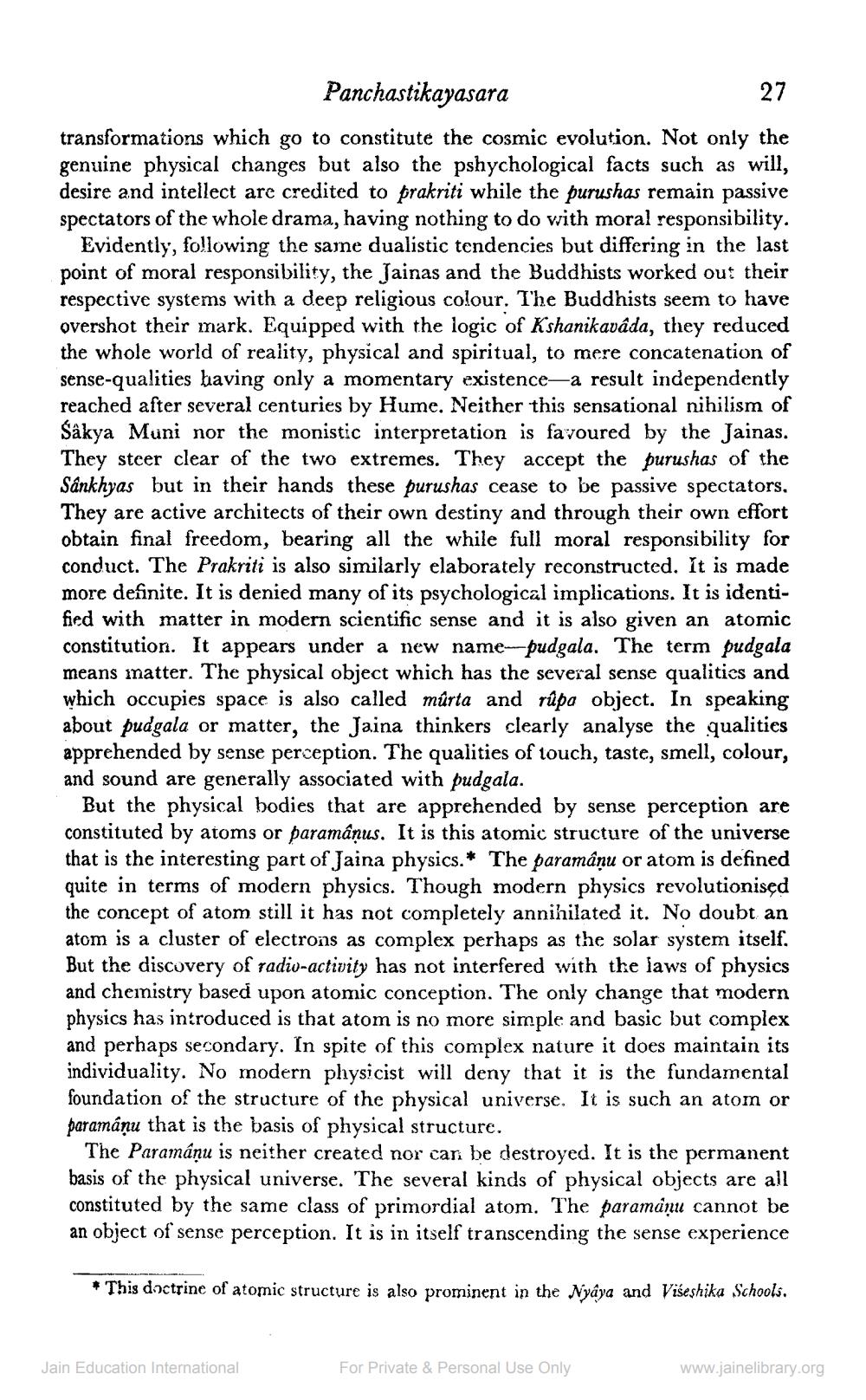________________
Panchastikayasara
27
transformations which go to constitute the cosmic evolution. Not only the genuine physical changes but also the pshychological facts such as will, desire and intellect are credited to prakriti while the purushas remain passive spectators of the whole drama, having nothing to do with moral responsibility.
Evidently, following the same dualistic tendencies but differing in the last point of moral responsibility, the Jainas and the Buddhists worked out their respective systems with a deep religious colour. The Buddhists seem to have overshot their mark. Equipped with the logic of Kshanikaváda, they reduced the whole world of reality, physical and spiritual, to mere concatenation of sense-qualities having only a momentary existence—a result independently reached after several centuries by Hume. Neither this sensational nihilism of Sâkya Muni nor the monistic interpretation is favoured by the Jainas. They steer clear of the two extremes. They accept the purushas of the Sankhyas but in their hands these purushas cease to be passive spectators. They are active architects of their own destiny and through their own effort obtain final freedom, bearing all the while full moral responsibility for conduct. The Prakriti is also similarly elaborately reconstructed. It is made more definite. It is denied many of its psychological implications. It is identified with matter in modern scientific sense and it is also given an atomic constitution. It appears under a new name- pudgala. The term pudgala means matter. The physical object which has the several sense qualities and which occupies space is also called mürta and rûpa object. In speaking about pudgala or matter, the Jaina thinkers clearly analyse the qualities apprehended by sense perception. The qualities of touch, taste, smell, colour, and sound are generally associated with pudgala.
But the physical bodies that are apprehended by sense perception are constituted by atoms or paramánus. It is this atomic structure of the universe that is the interesting part of Jaina physics.* The paramâņu or atom is defined quite in terms of modern physics. Though modern physics revolutionised the concept of atom still it has not completely annihilated it. No doubt an atom is a cluster of electrons as complex perhaps as the solar system itself. But the discovery of radio-activity has not interfered with the laws of physics and chemistry based upon atomic conception. The only change that modern physics has introduced is that atom is no more simple and basic but complex and perhaps secondary. In spite of this complex nature it does maintain its individuality. No modern physicist will deny that it is the fundamental foundation of the structure of the physical universe. It is such an atom or paramánu that is the basis of physical structure.
The Paramánu is neither created nor can be destroyed. It is the permanent basis of the physical universe. The several kinds of physical objects are all constituted by the same class of primordial atom. The paramánu cannot be an object of sense perception. It is in itself transcending the sense experience
* This doctrine of atomic structure is also prominent in the Nyaya and Višeshika Schools.
Jain Education International
For Private & Personal Use Only
www.jainelibrary.org




